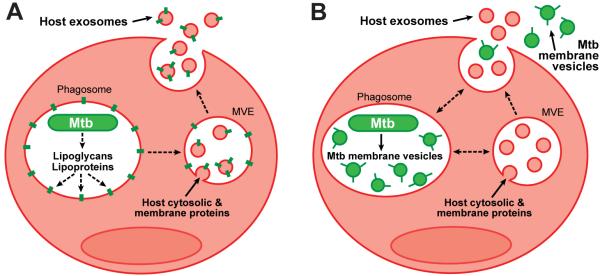Figure 7.

Proposed models for the trafficking of Mtb molecules into EVs and their release from Mtb-infected macrophages. (A) Existing model: extracellular release of Mtb molecules within exosomes. This model predicts that Mtb cell wall components are released from Mtb within the phagosome, inserted into host membranes, and transported to MVEs, where they are incorporated into inclusion vesicles (alternatively inclusion vesicles could be formed by analogous mechanisms within phagosomes). Exosomes bearing Mtb molecules are then released by exocytosis upon MVE fusion with the plasma membrane. (B) Revised model: extracellular release of Mtb molecules within BMVs. This model predicts that Mtb employs the release of BMVs as a mechanism to export Mtb molecules such as lipoglycans and lipoproteins. BMVs are produced by intracellular Mtb within the phagosome, dispersed through the endocytic system of the infected cell, and exocytosed in a manner similar to exosomes.
